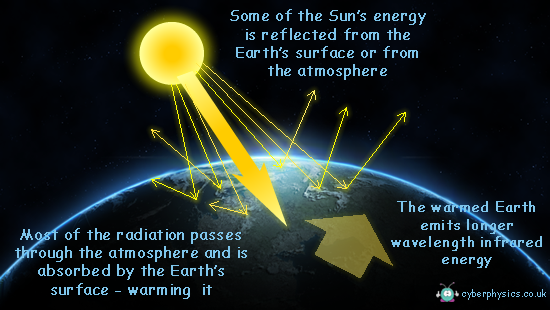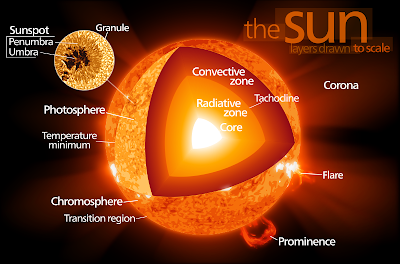Our Star, The Sun
The Sun is our local star. Like the other stars, it is a ball of very hot gas. It lies about 150 million kilometers from Earth and is about 1.4 million kilometers across. The Sun pours huge amount of energy into space. The light and heat that reach Earth make life possible.
- What is the Sun`s surface like?
The Sun`s surface is a bubbling, boiling mass of very hot gas, constantly in motion, like a stormy sea. Here and there, fountains of flaming gas thousands of kilometers high shot out. These are called prominences. Eventually, they curve over and fall back. Violent explosions called flares also often take place, blasting particles into space that can cause magnetic storms on Earth.
- Where does the Sun get its energy?
The energy that keeps the Sun shining is produced in its centre or core. The pressure in the core is enormous, and the temperature reaches 15 million Degree Celsius. Under these conditions, atoms of hydrogen gas fuse (join together) to form another gas, helium. This process is called nuclear fusion. It produces enormous energy amounts of energy.
 |
- What happens when the Sun warms Earth?
The Sun pours energy on to Earth, warming the land and the water in the oceans. Gases in the air trap the heat and warm the atmosphere. they act like a greenhouse, so the warming process is called the "greenhouse effect". One of the main gases that traps heat is carbon dioxide, produced when fuels burn
 |
- What is the Sun like inside?
The Sun is made up of a number of layers.In the centre is the very hot core,where energy is produced. This energy travels outward s by radiation , reaching the outer layer , called the convection region. There, currents of hot gas carry the energy to the surface (photosphere), where it escapes as light and heat. The temperature of the surface is about 5,500 Degree Celsius. Sunspots are dark patches on the surface. They are about 1,000 Degree Celsius cooler.Some sunspots grow grow to be bigger than earth.
 |
Occasionally, the moon moves across the face of the Sun during the day, blotting out its light and casting a dark shadow on earth. Day turns suddenly into night. we call this a total eclipse of the Sun. Eclipses occur because, from Earth , the moon seems to be almost the same size as the Sun and can cover it up. Total eclipse can only be seen over a small part of earth because the moon casts only a small shadow.
|

No comments:
Post a Comment